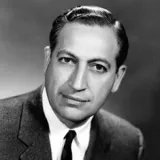
On March 8, 1958, the trustees elected John T. Fey as the university’s seventeenth president. The first southerner to head UVM, Fey was born in Hopewell, Virginia, on March 10, 1917. He completed his undergraduate education at Washington and Lee University and received an LL.B. degree from the University of Maryland in 1940, followed by a master’s degree in business administration from Harvard in 1942.
After serving in the Marine Corps during World War II, Fey practiced law in Maryland where he was elected to the state legislature for four years. In 1949 he became associate professor of law at George Washington University. He was awarded a doctor of juridical science degree from Yale in 1952 and was named dean of the George Washington University Law School in 1953. Three years later, Chief Justice Warren appointed him clerk of the United States Supreme Court. In the summer of 1958, Dr. Fey and his wife, the former Jane K. Gerber, moved into the new presidential residence at Englesby House with their ten-year-old son.
One of President Fey’s top priorities was to implement the ambitious building program started by his predecessor, Carl Borgmann. During Fey’s six years at UVM, the following construction projects were completed: Bailey Memorial Library; Patrick Gymnasium and Gutterson Field House; Marsh, Austin, Tupper, Patterson, Wright, and Christie residence halls; the Blundell home management house; Blasberg horticultural Weld laboratory; Votey Engineering Building; the second phase of the medical building program; the renovation of Williams Science Hall; and the conversion of Billings Library into a campus center.
This major expansion of the physical plant signaled a period of rapid growth, especially at the graduate level. New doctoral programs were established in chemistry, biochemistry, microbiology, pharmacology, botany, physics, physiology, biophysics, and zoology, and the university awarded its first Ph.D. degree in 1962. During this same period, faculty research projects increased rapidly, and a computing center was established in Waterman Hall. By the fall of 1963, total enrollments exceeded 4,000 students for the first time in UVM’s history, and the total operating budget more than doubled from $6.5 million in 1957–58 to $14 million in 1963–64. With new emphasis placed on research, sources of revenues began to shift to federal grants. In 1957–58, the state appropriation accounted for one-third of total revenues while federal grants covered 16 percent. Six years later, the state’s share had dropped to 28 percent, and federal funds increased to 26 percent. UVM was becoming heavily dependent on outside grants, and student charges were also increasing. By 1965 in-state tuition had risen to five hundred dollars, and nonresident tuition had jumped to fifteen hundred dollars.
A number of other changes occurred during Dr. Fey’s tenure as president. The university launched a major initiative to increase faculty salaries; sponsored the development of interdisciplinary programs in area and international studies; established the Special Collections program in the library; instituted employee fringe benefit programs, including group medical insurance; and clarified the legal status of the Wilbur scholarship fund by sponsoring a special act of the United States Congress.
John Fey resigned, effective August 1, 1964, to become president of the University of Wyoming. Two years later, he returned to Vermont to become president of the National Life Insurance Company in Montpelier. In 1974 he left for New York to chair the Equitable Life Assurance Company and the Westminster Bank–U.S. before he came back to Vermont to retire in Stowe. He served as a member of UVM’s board of trustees from 1982 to 1985.